| #1 | 
Planetary Nebula WeSb1
| Full record: 2067Description: A Planetary Nebula that Destroyed its Planetary System. Synthetic colour image of WeSb1. The data were obtained from the H-alpha filter (red) and the [O III] λ5007 filter (green and blue) using the Wide Field Camera on the Isaac Newton Telescope (INT). |
|
| #2 | 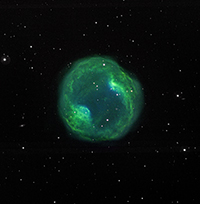
Planetary nebula PK 164+31.1
| Full record: 1564Description: The planetary nebula PK 164+31.1 observed with [OIII], Hα, and [SII] filters. |
|
| #3 | 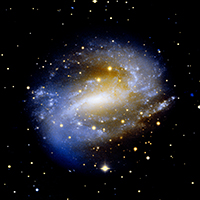
Galaxy NGC 925
| Full record: 1565Description: The galaxy NGC 925 observed with B and r filters. |
|
| #4 | 
Horsehead Nebula
| Full record: 1566Description: The Horsehead Nebula (Barnard 33) observed with B, g, and r filters. |
|
| #5 | 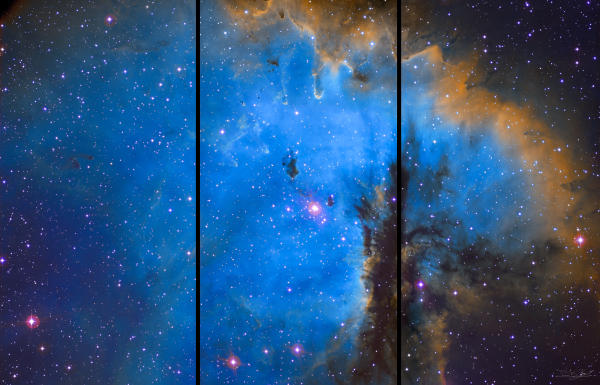
The Pacman Nebula or NGC281
| Full record: 2009Description: Image of the Pacman Nebula or NGC281, at 9500 light-years from Earth. In this image many interesting objects can be seen. First the blue color corresponds to ionized oxygen while the orange color is ionized hydrogen. The hydrogen together with the dark clouds trace the stellar formation regions of the nebula. In the center of the image it is IC1590 an open cluster made of recently formed stars. This image was taken using the Wide Field Camera at the 2.54m Isaac Newton Telescope 2.54m. A total of five exposures of 180 seconds each were taken for each of the used filters. |
|
| #6 | 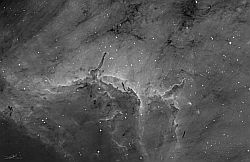
The Pelican Nebula
| Full record: 1868Description: This image shows an enormous hydrogen cloud with variable density, which is located on the innermost area of the Pelican Nebula or (IC5070), at 1800 light-years from Earth. Most of that hydrogen will be used to form new stars. The dark clouds are mostly made of dust which blocks the light from the nebula. This image was taken using the Wide Field Camera at the 2.54m Isaac Newton Telescope 2.54m. A total of 17 exposures of 120 seconds each were taken. The lack of color is due to only one filter instead if three (RGB) was used. Image processed by Abel de Burgos. |
|
| #7 | 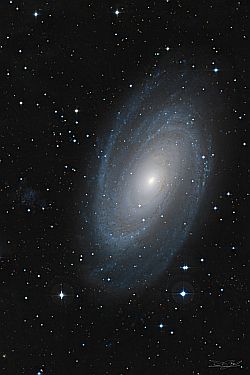
M81 Galaxy.
| Full record: 1955Description: The Bode galaxy or M81 is among the most observed targets in the sky. At roughly 12 million light-years from our galaxy, the arms of this spiral galaxy are clearly defined and show many dusty structures and formation regions. On the left side of the image it is Holmberg IX, a dwarf irregular galaxy and a satellite galaxy of M81. This image was taken using the Wide Field Camera at the 2.54m Isaac Newton Telescope 2.54m. A total of 12 exposures of 180 seconds each were taken for each of the used filters (Sloan g, r, and i). |
|
| #8 | 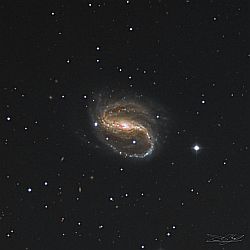
NGC7479 Galaxy.
| Full record: 1957Description: The NGC 7479 galaxy, also known as Caldwell 44, is a barred spiral galaxy located at a distance of 105 million light-years from the Milky Way. Two main arms can be seen at both sides of the central bar. It is important to mention that all the stars in the image belong to our own galaxy, while in the image many other distant galaxies can be also seen. This image was taken using the Wide Field Camera at the 2.54m Isaac Newton Telescope 2.54m. For making this image, the H-beta, Oxygen-III and H-Alpha filters were used, using exposure times between 300 and 720. |
|
| #9 | 
NGC 1514
| Full record: 1822Description: Colour-composite image of the planetary nebula NGC 1514 obtained from narrowband Halpha+[N II] and [OIII] images taken using the Wide Field Camera (WFC) on the Isaac Newton Telescope (INT). |
|
| #10 | 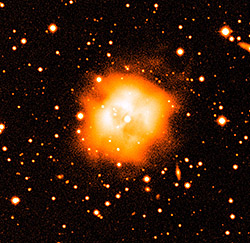
NGC 1514
| Full record: 1823Description: 1 hour exposure through filter Hα+[NII] using the WFC on the INT. |
|
| #11 | 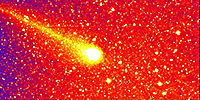
Comet C2013US10
| Full record: 1812Description: Image obtained using the WFC on the INT through filter Sloan r. Telescope: INT Instrument: WFC Credit: John Davies Date: 14 March 2016 |
|
| #12 | 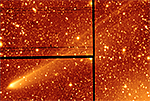
Comet 67P/Churyumov-Gerasimenko
| Full record: 1811Description: Comet 67P/Churyumov-Gerasimenko, landing target of ESA mission Rosetta. Image obtained using the WFC on the INT. |
|
| #13 | 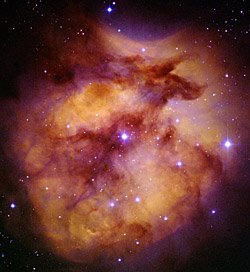
Cocoon nebula
| Full record: 1821Description: Colour-composite (RGB) image of the Cocoon nebula obtained from a combination of wide- and narrow-band images taken using the Wide Field Camera (WFC) on the 2.5 m Isaac Newton Telescope. Only part of the CCD #4 is shown (click on the image for a full display). The following colour code was used: broad-band B image (blue), and narrow-band H. and H. images (green and red, respectively) |
|
| #14 | 
M81 Galaxy.
| Full record: 1954Description: Field of view (CCD4 detector) is ~10 x 30 arcminutes. Filters and channels: R: H-alfa; G: r; B: B. Images exposure time: H 4x180, r 4x180, B 4x60. Orientation is N up E left. Telescope: INT Instrument: WFC Credit: Inaki Ordonez (ING) and Kamil Hornock (Ondrejov). Date: 1 January 2015 |
|
| #15 | 
The Most Detailed Catalogue Ever Made of the Visible Milky Way
| Full record: 2004Description: A density map of part of the Milky Way disk, constructed from IPHAS data. The scales show galactic latitude and longitude, coordinates that relate to the position of the centre of the galaxy. The mapped data are the counts of stars brighter than 20th magnitude detected in Sloan i, the longer (redder) wavelength broad band of the survey. Although this is just a small section of the full map, it portrays in exquisite detail the complex patterns of obscuration due to interstellar dust. This image contains 600 x 2400 independent data points, each of which represents the star count within 1 x 1 square arcminute cells (1 arcminute is 1/60th of a degree). At the level of the original exposed images, each cell is itself made up of 32,000 pixels. The typical effective angular resolution of the data is close to 1 arcsecond (1/3600th of a degree or about 10 original image pixels). The section shown features the edge of the Sagittarius spiral arm (near longitude 60 degrees) and the Cygnus-X molecular cloud complex (at around 80 degrees longitude). Both of these appear as regions of reduced star counts due to the obscuring effect of higher dust concentrations. |
|
| #16 | 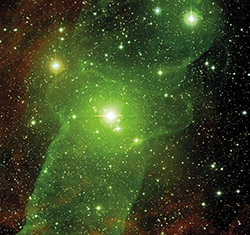
Ou4 Nebula
| Full record: 1824Description: Highly bipolar-collimated outflow Ou4 nebula. Shown here is the whole mosaic as obtained using the Isaac Newton Telescope, where red is Hα+[NII], green is [OIII], and blue is the Sloan g broadband filter. Note that the outflow, also nicknamed he Giant Squid, has an extension of 2.5 full moons on the sky. APOD: http://apod.nasa.gov/apod/ap140718.html More: http://www.ing.iac.es/PR/press/squid.htm...Telescope: INT Instrument: WFC Credit: Romano Corradi (IAC), Nicolas Grosso, Agnes Acker, Robert Greimel, Patrick Guillout. Image processing by Gabriel Perez (IAC) Date: 17 July 2014 |
|
| #17 | 
M78 Nebula
| Full record: 1825Description: This image was obtained through the filters Harris R, Harris V and Harris B to match red, green and blue respectively. Each exposure time was 180 seconds. Telescope: INT Instrument: WFC Credit: Alexis Smith. Date: 1 January 2014 |
|
| #18 | 
M81 Galaxy.
| Full record: 1953Description: Observed with INT-WFC on 14th Oct 2013. Filters: H-alpha 4x400s (red), Sloan r 3x120s (green and blue). Software: Theli - image reduction of the mosaic; IRAF - image reduction of the single CCD image; FITSLiberator - intensity stretching; MATLAB - RGB composition, filtering and minor corrections. Telescope: INT Instrument: WFC Credit: Teo Mocnik (ING) and Kamil Hornoch. Date: 14 October 2013 |
|
| #19 | 
IC 1396A
| Full record: 1830Description: A New View of the Elephant Trunk Nebula. IC 1396B in the constellation Cepheus imaged in the red light from hydrogen atoms. These images were obtained as part of the INT/WFC Photometric Hydrogen-Alpha Survey of the Northern Galactic Plane (IPHAS). Image obtained using the Wide-Field Camera on the Isaac Newton Telescope. The image scale is 5 degrees roughly. |
|
| #20 | 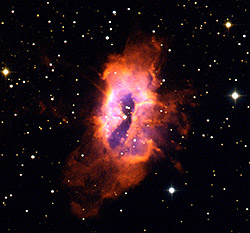
PN Sh2-71
| Full record: 1826Description: This composite image was obtained through the filters Halpha (red, 3x120s), Sloan r (green, 3x30s) and [OIII] (blue, 3x120s) using the Wide Field Camera on the Isaac Newton Telescope on the 21st of October, 2013. Images were reduced using THELI, and processed using FITS Liberator and MATLAB. Field of view is 9x6 arcminutes, North up, East left. |
|
| #21 | 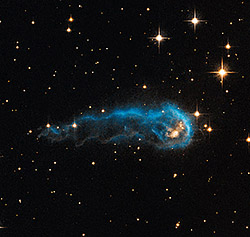
IRAS 20324+4057
| Full record: 1827Description: This image of IRAS 20324+4057 is a composite of Hubble Advanced Camera for Surveys data taken in green and infrared light in 2006, and ground-based imaging in the red from the Isaac Newton Telescope (INT) in 2003, as part of the INT Photometric H-alpha Survey of the Nothern Galactic Plane (IPHAS). This cosmic caterpillar was monthly image of the Hubble Heritage Project. |
|
| #22 | 
NGC 2359 Nebula
| Full record: 181Description: This is an image of NGC 2359, better known as the Thors Helmet nebula, obtained using the Wide-Field Camera on the Isaac Newton Telescope.
NGC 2359 is actually more like an interstellar bubble, blown as a fast wind from the bright, massive star near the bubbles center sweeps through a
surrounding molecular cloud. The central star is an extremely hot giant Wolf-Rayet star thought to be in a brief,
pre-supernova stage of evolution.
|
|
| #23 | 
IC 1396 Nebula
| Full record: 184Description: IC 1396 in the constellation Cepheus imaged in the red light from hydrogen atoms.
This image was obtained as part of the INT/WFC Photometric Hydrogen-Alpha Survey of the Northern Galactic Plane (IPHAS).
Credit: Geert Barentsen & Jorick Vink (Armagh Observatory) & the IPHAS Collaboration. |
|
| #24 | 
NGC2359
| Full record: 1831Description: NGC 2359, better known as the Thor Helmet nebula, is actually more like an interstellar bubble, blown as a fast wind from the bright, massive star near the bubble center sweeps through a surrounding molecular cloud. Known as a Wolf-Rayet star, the central star is an extremely hot giant thought to be in a brief, pre-supernova stage of evolution. It lies about 15,000 light years from Earth in the constellation Canis Major, measuring about 30 light years. This image of the Thor Helmet nebula or NGC 2359 was obtained using the Wide Field Camera on the Isaac Newton Telescope (INT). It is a three-colour composite made from data collected using filters to isolate the light emitted by hydrogen alpha (H-alpha), doubly-ionised oxygen (OIII) and single-ionised sulfur (SII) atoms, and coded in the image as red, green and blue respectively. Telescope: INT Instrument: WFC Credit: Rafael Barrena (IAC) and Daniel Lopez. Date: 1 January 2012 |
|
| #25 | 
The Cat
| Full record: 211Description: Image acquired using the Wide Field Camera on the Isaac Newton Telescope of the Cats Eye Nebula, or NGC 6543. Credit: D. L |
|
| #26 | 
IC 1396B
| Full record: 1829Description: IC 1396B in the constellation Cepheus imaged in the red light from hydrogen atoms. These images were obtained as part of the INT/WFC Photometric Hydrogen-Alpha Survey of the Northern Galactic Plane (IPHAS). Image obtained using the Wide-Field Camera on the Isaac Newton Telescope. The image scale is 5 degrees roughly. Telescope: INT Instrument: WFC Credit: Geert Barentsen & Jorick Vink (Armagh Observatory) & the IPHAS Collaboration. Date: 1 January 2011 |
|
| #27 | 
The Crescent Nebula
| Full record: 215Description: This image of the Crescent Nebula or NGC 6888 was obtained using the Wide Field Camera on the Isaac Newton Telescope. It is a three-colour composite made from data collected using filters to
isolate the light emitted by hydrogen alpha (H-alpha) and doubly ionised oxygen (OIII) atoms |
|
| #28 | 
The Ring Nebula
| Full record: 219Description: This image of the Ring Nebula or Messier 57 was obtained using the Wide Field Camera on the Isaac Newton Telescope. It is a three-colour composite made from data collected using
filters to isolate the light emitted by hydrogen alpha (H-alpha), doubly ionised oxygen (OIII) and ionised sulfur (SII) atoms |
|
| #29 | 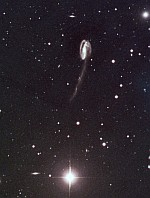
Tadpole Galaxy
| Full record: 1895Description: Tadpole Galaxy (ARP 188 or UGC 10214). This galaxy has a stream of material flowing out of it, as it is interacting with another galaxy. In this case, the stream of material is apparently flowing towards nothing. Detector: EEV 4280. Filters and exposure times:50s in R (Harris), i (Sloan) and g (Sloan) filters. Telescope: INT Instrument: WFC Credit: Alex Tudorica. Date: 1 January 2010 |
|
| #30 | 
Abell 2254
| Full record: 1962Description: Abell 2254 is a large galaxy cluster comprising thousands of galaxies which appear reddish in the image due to the Doppler effect. Image acquired using the Wide Field Camera on the INT, using filters sloan g, sloan r and sloan i. Telescope: INT Instrument: WFC Credit: Rafael Barrena (IAC, Spain). Date: 1 January 2010 |
|
| #31 | 
NGC 6888
| Full record: 1842Description: The Crescent Nebula (NGC 6888), which surrounds the Wolf-Rayet star PPM 84423 or HD192163, seen in Hydrogen-α emission. This was observed as part of the Isaac Newton Telescope/Wide Field Camera Photometric Hydrogen-α Survey (IPHAS) of the Galactic Plane. NGC 6888 is the illuminated ejecta of the star HD192163. This image of the Crescent Nebula or NGC 6888 was obtained using the Wide Field Camera on the Isaac Newton Telescope. It is a three-colour composite made from data collected using filters to isolate the light emitted by hydrogen alpha (H-alpha) and doubly ionised oxygen (OIII) atoms, and coded in the image as red, green (25% H-alpha and 75% OIII) and blue. PDF version: http://www.ing.iac.es/PR/press/NGC6888.pdf. PDF version: http://www.ing.iac.es/PR/dissemination/ngc6888.pdf. APOD: https://apod.nasa.gov/apod/ap090915.html |
|
| #32 | 
M57
| Full record: 1860Description: M57 planetary nebula, also known as the Ring Nebula. The famous ring nebula M57 is often regarded as the prototype of a planetary nebula, and a showpiece in the northern hemisphere summer sky. Recent research has confirmed that it is, most probably, actually a ring (torus) of bright light-emitting material surrounding its central star, and not a spherical (or ellipsoidal) shell. Isaac Newton Telescope, Wide Field Camera. Filters: H-alpha, OIII and SII. PDF version: http://www.ing.iac.es/PR/press/M57.pdf, http://www.ing.iac.es/PR/dissemination/m57.pdf |
|
| #33 | 
NGC 6995 and NGC6992, part of the Cygnus Loop
| Full record: 1883Description: The Cygnus Loop is the remnant of a type II supernova. For a few days the supernova emitted as much energy as a whole galaxy. When it was all over, a large fraction of the star was blown into space as a supernova remnant, which its typical at most few light-years across. This image is part of the Eastern Veil Nebula, or NGC 6992, and it was obtained using the Wide Field Camera on the Isaac Newton Telescope. It is a three-colour composite made from data collected using filters to isolate the light emitted by hydrogen alpha (H-alpha), doubly ionised oxygen (OIII) and ionised sulfur (SII) atoms, and coded in the image as red, green and blue respectively. PDF version: http://www.ing.iac.es/PR/press/NGC6992.pdf, http://www.ing.iac.es/PR/dissemination/ngc6992.pdf. APOD: https://apod.nasa.gov/apod/ap091201.html |
|
| #34 | 
M101 galaxy
| Full record: 1936Description: M101 galaxy, the Pinwheel galaxy. M101 is one of the most prominent Grand Design spirals in the sky. While quite symmetric visually, it is of remarkable unsymmetry, its core being considerably displaced from the center of the disk. Halton Arp has included M101 as No. 26 in his Catalogue of Peculiar Galaxies as a Spiral with One Heavy Arm. Colour composite using filters Sloan g, r+H-alpha and i. PDF versions: https://www.ing.iac.es/PR/science/M101_2.pdf, http://www.ing.iac.es/PR/dissemination/m101_poster.pdf Telescope: INT Instrument: WFC Credit: R. Barrena and D. Lopez (IAC). Date: 1 January 2009 |
|
| #35 | 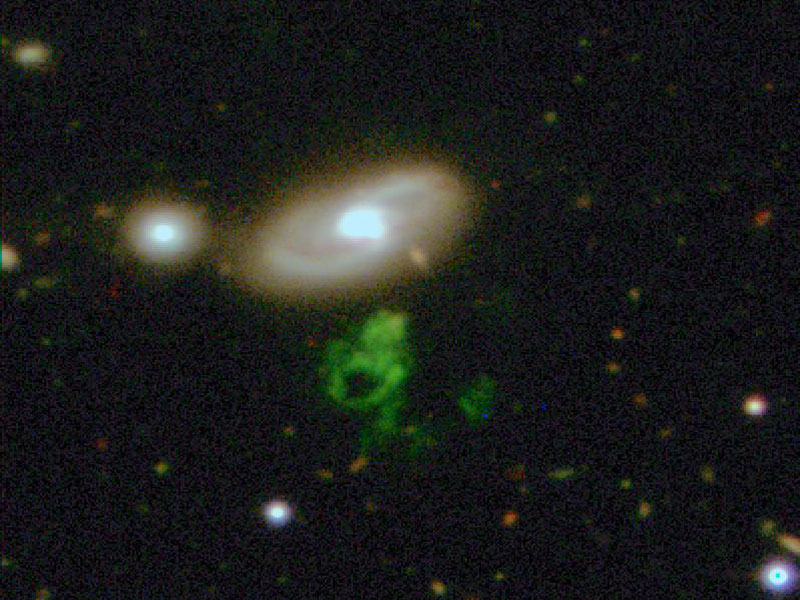
Hanny's Voorerp
| Full record: 2002Description: What is that green thing? A volunteer sky enthusiast surfing through online Galaxy Zoo images has discovered something really strange. The mystery object is unusually green, not of any clear galaxy type, and situated below relatively normal looking spiral galaxy IC 2497. Dutch schoolteacher Hanny van Arkel, discovered the strange green voorwerp (Dutch for object) last year. The Galaxy Zoo project encourages sky enthusiasts to browse through SDSS images and classify galaxy types. Now known popularly as Hannys Voorwerp, subsequent observations have shown that the mysterious green blob has the same distance as neighboring galaxy IC 2497. Research is ongoing, but one leading hypothesis holds that Hannys Voorwerp is a small galaxy that acts like a large reflection nebula, showing the reflected light of a bright quasar event that was visible in the center of IC 2497 about 100,000 years ago. Pictured above, Hannys Voorwerp was imaged recently by the 2.5-meter Isaac Newton Telescope in the Canary Islands by Dan Smith, Peter Herbert and Chris Lintott (Univ. Hertfordshire). Other collaboration members include Matt Jarvis, Kevin Schawinski, and William Keel. |
|
| #36 | 
NGC 2237
| Full record: 1832Description: This image of the Rosette Nebula (NGC 2237) is thought to be the most-detailed ever produced. Compiled from data taken from IPHAS, the Isaac Newton Telescope Photometric Hydrogen-Alpha Survey of the Northern Galactic Plane, the image spans four square degrees, about twenty times the size of the full moon. Image obtained using the Wide-Field Camera on the Isaac Newton Telescope. Resolution is 1 arcsecond per pixel, and North is up, east is left. PDF version: https://www.ing.iac.es/PR/dissemination/rosette.pdf Telescope: INT Instrument: WFC Credit: Nick Wright (University College London) and the IPHAS collaboration. Date: 1 January 2007 |
|
| #37 | 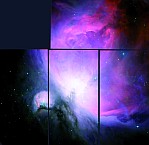
M42
| Full record: 1837Description: This is the star-formation region M42, also known as the Orion nebula. The gas and dust in the nebula emits light because it is irradiated by nearby emerging stars. Located at a distance of about 1,600 light years, the Orion nebula is the brightest diffuse nebula in the sky, visible to the naked eye. It is the main part of a much larger cloud of gas and dust which extends over 10 degrees well over half the constellation Orion. Wide-Field Camera on the Isaac Newton Telescope. Telescope: INT Instrument: WFC Credit: Jonathan Irwin. Date: 1 January 2007 |
|
| #38 | 
A new planetary nebula
| Full record: 1847Description: This image is a new planetary nebula discovered by the INT/WFC Photometric Hydrogen-Alpha Survey of the Northern Galactic Plane (IPHAS). The nebula was confirmed to be a relatively old planetary nebula using the ISIS spectrograph on the William Herschel Telescope. Image obtained using the Wide-Field Camera on the Isaac Newton Telescope. It is a two-colour image, red for H-alpha and green for [OIII]. North is to the right and East is to the top. PDF version: https://www.ing.iac.es/PR/dissemination/iphasPN.pdf Telescope: INT Instrument: WFC Credit: Laurence Sabin, Nick Wright and the IPHAS collaboration. Date: 1 January 2007 |
|
| #39 | 
Sharpless 2-188
| Full record: 1848Description: e central star of Sharpless 2-188 is 850 light years away and it is travelling at 125 kilometres per second across the sky. Observations show a strong brightening in the direction in which the star is moving and faint material stretching away in the opposite direction. The astronomers believe that the bright structures in the arc observed ahead of Sharpless 2-188 are the bowshock instabilities revealed in the simulations, which will form whirlpools as they spiral past the star downstream to the tail. This image was obtained as part of the INT/WFC Photometric Hydrogen-Alpha Survey of the Northern Galactic Plane (IPHAS). Image obtained using the Wide-Field Camera on the Isaac Newton Telescope. PDF version: https://www.ing.iac.es/PR/dissemination/sh2188.pdf Telescope: INT Instrument: WFC Credit: Nick Wright (University College London) and the IPHAS collaboration. Date: 1 January 2007 |
|
| #40 | 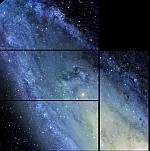
The Andromeda Galaxy
| Full record: 1891Description: Image obtained using the Wide Field Camera on the Isaac Newton Telescope and filters B and V. Telescope: INT Instrument: WFC Credit: F. Vilardell, I. Ribas and C. Jordi, N. Szymanek. Date: 1 January 2007 |
|
| #41 | 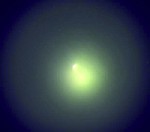
Comet 17P/Holmes
| Full record: 1809Description: INT image of comet 17P/Holmes processed to show the inner coma structure. Comet 17P/Holmes underwent an outburst that increased its brightness on the night of the 23rd if October 2006. Image obtained using the Wide-Field Camera on the Isaac Newton Telescope. Telescope: INT Instrument: WFC Credit: T. Naylor, A. Fitzsimmons, C. Brunt. Date: 23 October 2006 |
|
| #42 | 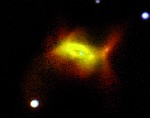
IPHAS PN-1
| Full record: 1867Description: The Principes de Asturias nebula or IPHAS PN-1. The discovery of the first new PN from the IPHAS survey is an unusual object located at a large galactocentric distance and has a very low oxygen abundance. The so-called Pricipes de Asturias nebula shows an intricate morphology: there is an inner ring surrounding the central star, bright inner lobes with an enhanced waist, and very faint lobular extensions reaching up to more than 100 arcseconds. Image acquired using the Wide-field Camera on the Isaac Newton Telescope. Telescope: INT Instrument: WFC Credit: Abel de Burgos Sierra (ING). Date: 1 January 2006 |
|
| #43 | 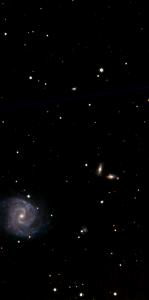
NGC 1042
| Full record: 1973Description: True colour images of nearby galaxy groups. Images in the B, R and I filters were taken using the WFC instrument on the Isaac Newton Telescope (INT) and combined using IRAF tasks. The image is named according to the largest galaxy in the field, or on images with several large galaxies, by the galaxy nearest the center of the image. This images is at the full resolution of the WFC which is ~2k x 4k pixels. |
|
| #44 | 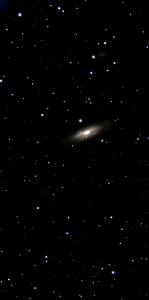
NGC 1589
| Full record: 1974Description: True colour images of nearby galaxy groups. Images in the B, R and I filters were taken using the WFC instrument on the Isaac Newton Telescope (INT) and combined using IRAF tasks. The image is named according to the largest galaxy in the field, or on images with several large galaxies, by the galaxy nearest the center of the image. This images is at the full resolution of the WFC which is ~2k x 4k pixels. |
|
| #45 | 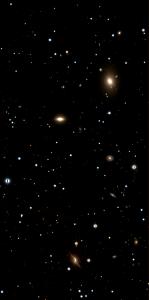
NGC 2563
| Full record: 1975Description: True colour images of nearby galaxy groups. Images in the B, R and I filters were taken using the WFC instrument on the Isaac Newton Telescope (INT) and combined using IRAF tasks. The image is named according to the largest galaxy in the field, or on images with several large galaxies, by the galaxy nearest the center of the image. This images is at the full resolution of the WFC which is ~2k x 4k pixels. |
|
| #46 | 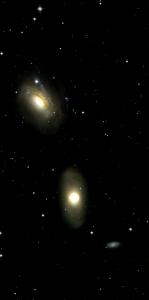
NGC 3166
| Full record: 1976Description: True colour images of nearby galaxy groups. Images in the B, R and I filters were taken using the WFC instrument on the Isaac Newton Telescope (INT) and combined using IRAF tasks. The image is named according to the largest galaxy in the field, or on images with several large galaxies, by the galaxy nearest the center of the image. This images is at the full resolution of the WFC which is ~2k x 4k pixels. |
|
| #47 | 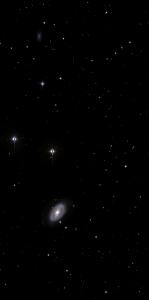
NGC 3185
| Full record: 1977Description: True colour images of nearby galaxy groups. Images in the B, R and I filters were taken using the WFC instrument on the Isaac Newton Telescope (INT) and combined using IRAF tasks. The image is named according to the largest galaxy in the field, or on images with several large galaxies, by the galaxy nearest the center of the image. This images is at the full resolution of the WFC which is ~2k x 4k pixels. |
|
| #48 | 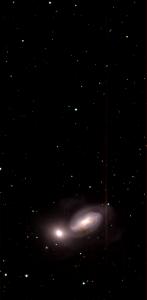
NGC 3227
| Full record: 1978Description: True colour images of nearby galaxy groups. Images in the B, R and I filters were taken using the WFC instrument on the Isaac Newton Telescope (INT) and combined using IRAF tasks. The image is named according to the largest galaxy in the field, or on images with several large galaxies, by the galaxy nearest the center of the image. This images is at the full resolution of the WFC which is ~2k x 4k pixels. |
|
| #49 | 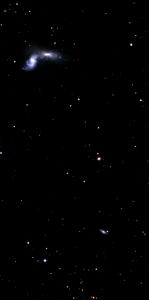
NGC 3227
| Full record: 1979Description: True colour images of nearby galaxy groups. Images in the B, R and I filters were taken using the WFC instrument on the Isaac Newton Telescope (INT) and combined using IRAF tasks. The image is named according to the largest galaxy in the field, or on images with several large galaxies, by the galaxy nearest the center of the image. This images is at the full resolution of the WFC which is ~2k x 4k pixels. |
|
| #50 | 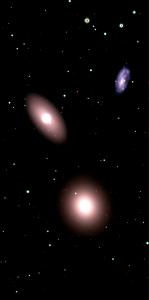
Leo Group
| Full record: 1980Description: True colour images of nearby galaxy groups. Images in the B, R and I filters were taken using the WFC instrument on the Isaac Newton Telescope (INT) and combined using IRAF tasks. The image is named according to the largest galaxy in the field, or on images with several large galaxies, by the galaxy nearest the center of the image. This images is at the full resolution of the WFC which is ~2k x 4k pixels. |
|
| #51 | 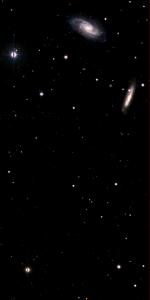
NGC 3430
| Full record: 1981Description: True colour images of nearby galaxy groups. Images in the B, R and I filters were taken using the WFC instrument on the Isaac Newton Telescope (INT) and combined using IRAF tasks. The image is named according to the largest galaxy in the field, or on images with several large galaxies, by the galaxy nearest the center of the image. This images is at the full resolution of the WFC which is ~2k x 4k pixels. |
|
| #52 | 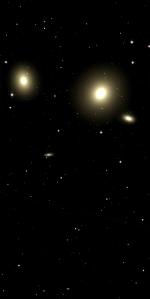
NGC 3607
| Full record: 1982Description: True colour images of nearby galaxy groups. Images in the B, R and I filters were taken using the WFC instrument on the Isaac Newton Telescope (INT) and combined using IRAF tasks. The image is named according to the largest galaxy in the field, or on images with several large galaxies, by the galaxy nearest the center of the image. This images is at the full resolution of the WFC which is ~2k x 4k pixels. |
|
| #53 | 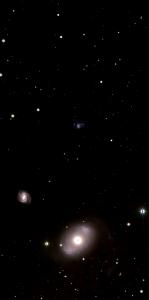
NGC 4151
| Full record: 1983Description: True colour images of nearby galaxy groups. Images in the B, R and I filters were taken using the WFC instrument on the Isaac Newton Telescope (INT) and combined using IRAF tasks. The image is named according to the largest galaxy in the field, or on images with several large galaxies, by the galaxy nearest the center of the image. This images is at the full resolution of the WFC which is ~2k x 4k pixels. |
|
| #54 | 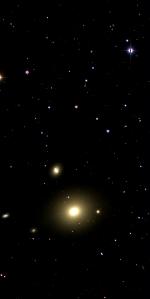
NGC 4261
| Full record: 1984Description: True colour images of nearby galaxy groups. Images in the B, R and I filters were taken using the WFC instrument on the Isaac Newton Telescope (INT) and combined using IRAF tasks. The image is named according to the largest galaxy in the field, or on images with several large galaxies, by the galaxy nearest the center of the image. This images is at the full resolution of the WFC which is ~2k x 4k pixels. |
|
| #55 | 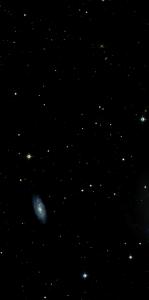
NGC 4712
| Full record: 1985Description: True colour images of nearby galaxy groups. Images in the B, R and I filters were taken using the WFC instrument on the Isaac Newton Telescope (INT) and combined using IRAF tasks. The image is named according to the largest galaxy in the field, or on images with several large galaxies, by the galaxy nearest the center of the image. This images is at the full resolution of the WFC which is ~2k x 4k pixels. |
|
| #56 | 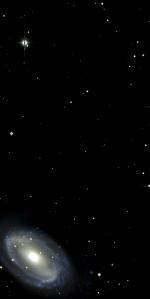
NGC 4725
| Full record: 1986Description: True colour images of nearby galaxy groups. Images in the B, R and I filters were taken using the WFC instrument on the Isaac Newton Telescope (INT) and combined using IRAF tasks. The image is named according to the largest galaxy in the field, or on images with several large galaxies, by the galaxy nearest the center of the image. This images is at the full resolution of the WFC which is ~2k x 4k pixels. |
|
| #57 | 
NGC 5035
| Full record: 1987Description: True colour images of nearby galaxy groups. Images in the B, R and I filters were taken using the WFC instrument on the Isaac Newton Telescope (INT) and combined using IRAF tasks. The image is named according to the largest galaxy in the field, or on images with several large galaxies, by the galaxy nearest the center of the image. This images is at the full resolution of the WFC which is ~2k x 4k pixels. |
|
| #58 | 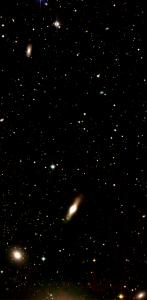
NGC 5049
| Full record: 1988Description: True colour images of nearby galaxy groups. Images in the B, R and I filters were taken using the WFC instrument on the Isaac Newton Telescope (INT) and combined using IRAF tasks. The image is named according to the largest galaxy in the field, or on images with several large galaxies, by the galaxy nearest the center of the image. This images is at the full resolution of the WFC which is ~2k x 4k pixels. |
|
| #59 | 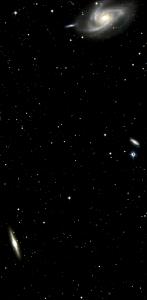
NGC 5054
| Full record: 1989Description: True colour images of nearby galaxy groups. Images in the B, R and I filters were taken using the WFC instrument on the Isaac Newton Telescope (INT) and combined using IRAF tasks. The image is named according to the largest galaxy in the field, or on images with several large galaxies, by the galaxy nearest the center of the image. This images is at the full resolution of the WFC which is ~2k x 4k pixels. |
|
| #60 | 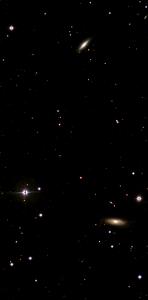
NGC 516
| Full record: 1990Description: True colour images of nearby galaxy groups. Images in the B, R and I filters were taken using the WFC instrument on the Isaac Newton Telescope (INT) and combined using IRAF tasks. The image is named according to the largest galaxy in the field, or on images with several large galaxies, by the galaxy nearest the center of the image. This images is at the full resolution of the WFC which is ~2k x 4k pixels. |
|
| #61 | 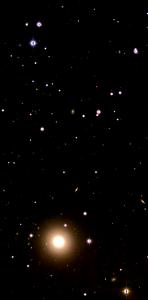
NGC 524
| Full record: 1991Description: True colour images of nearby galaxy groups. Images in the B, R and I filters were taken using the WFC instrument on the Isaac Newton Telescope (INT) and combined using IRAF tasks. The image is named according to the largest galaxy in the field, or on images with several large galaxies, by the galaxy nearest the center of the image. This images is at the full resolution of the WFC which is ~2k x 4k pixels. |
|
| #62 | 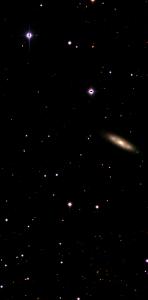
NGC 532
| Full record: 1992Description: True colour images of nearby galaxy groups. Images in the B, R and I filters were taken using the WFC instrument on the Isaac Newton Telescope (INT) and combined using IRAF tasks. The image is named according to the largest galaxy in the field, or on images with several large galaxies, by the galaxy nearest the center of the image. This images is at the full resolution of the WFC which is ~2k x 4k pixels. |
|
| #63 | 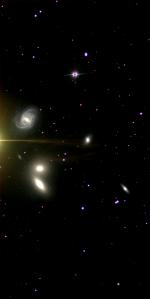
NGC 5350
| Full record: 1993Description: True colour images of nearby galaxy groups. Images in the B, R and I filters were taken using the WFC instrument on the Isaac Newton Telescope (INT) and combined using IRAF tasks. The image is named according to the largest galaxy in the field, or on images with several large galaxies, by the galaxy nearest the center of the image. This images is at the full resolution of the WFC which is ~2k x 4k pixels. |
|
| #64 | 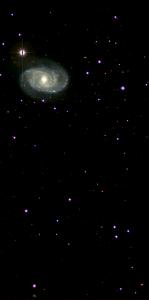
NGC 5371
| Full record: 1994Description: True colour images of nearby galaxy groups. Images in the B, R and I filters were taken using the WFC instrument on the Isaac Newton Telescope (INT) and combined using IRAF tasks. The image is named according to the largest galaxy in the field, or on images with several large galaxies, by the galaxy nearest the center of the image. This images is at the full resolution of the WFC which is ~2k x 4k pixels. |
|
| #65 | 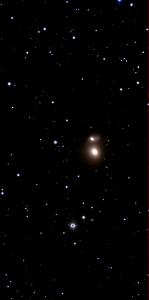
II Zw 012
| Full record: 1995Description: True colour images of nearby galaxy groups. Images in the B, R and I filters were taken using the WFC instrument on the Isaac Newton Telescope (INT) and combined using IRAF tasks. The image is named according to the largest galaxy in the field, or on images with several large galaxies, by the galaxy nearest the center of the image. This images is at the full resolution of the WFC which is ~2k x 4k pixels. |
|
| #66 | 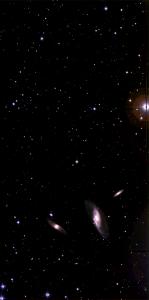
HGC 10
| Full record: 1996Description: True colour images of nearby galaxy groups. Images in the B, R and I filters were taken using the WFC instrument on the Isaac Newton Telescope (INT) and combined using IRAF tasks. The image is named according to the largest galaxy in the field, or on images with several large galaxies, by the galaxy nearest the center of the image. This images is at the full resolution of the WFC which is ~2k x 4k pixels. |
|
| #67 | 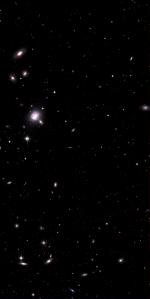
The Coma cluster
| Full record: 1997Description: True colour images of nearby galaxy groups. Images in the B, R and I filters were taken using the WFC instrument on the Isaac Newton Telescope (INT) and combined using IRAF tasks. The image is named according to the largest galaxy in the field, or on images with several large galaxies, by the galaxy nearest the center of the image. This images is at the full resolution of the WFC which is ~2k x 4k pixels. |
|
| #68 | 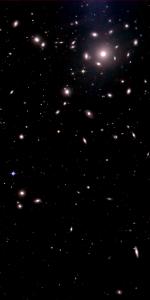
The Coma cluster
| Full record: 1998Description: True colour images of nearby galaxy groups. Images in the B, R and I filters were taken using the WFC instrument on the Isaac Newton Telescope (INT) and combined using IRAF tasks. The image is named according to the largest galaxy in the field, or on images with several large galaxies, by the galaxy nearest the center of the image. This images is at the full resolution of the WFC which is ~2k x 4k pixels. |
|
| #69 | 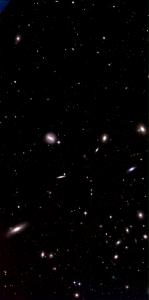
The Coma cluster
| Full record: 1999Description: True colour images of nearby galaxy groups. Images in the B, R and I filters were taken using the WFC instrument on the Isaac Newton Telescope (INT) and combined using IRAF tasks. The image is named according to the largest galaxy in the field, or on images with several large galaxies, by the galaxy nearest the center of the image. This images is at the full resolution of the WFC which is ~2k x 4k pixels. |
|
| #70 | 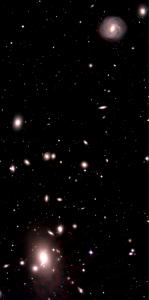
The Coma cluster
| Full record: 2000Description: True colour images of nearby galaxy groups. Images in the B, R and I filters were taken using the WFC instrument on the Isaac Newton Telescope (INT) and combined using IRAF tasks. The image is named according to the largest galaxy in the field, or on images with several large galaxies, by the galaxy nearest the center of the image. This images is at the full resolution of the WFC which is ~2k x 4k pixels. |
|
| #71 | 
IC 1396B
| Full record: 1828Description: IC 1396B in the constellation Cepheus imaged in the red light from hydrogen atoms. These images were obtained as part of the INT/WFC Photometric Hydrogen-Alpha Survey of the Northern Galactic Plane (IPHAS). Image obtained using the Wide-Field Camera on the Isaac Newton Telescope. The image scale is roughly 15 x 15 square arcminutes, with N to the left and E down. PDF version: https://www.ing.iac.es/PR/dissemination/IC1396B.pdf Telescope: INT Instrument: WFC Credit: Nick Wright (University College London) and the IPHAS collaboration. Date: 1 January 2005 |
|
| #72 | 
NGC 2237
| Full record: 1833Description: Dust lanes in the centre of the Rosette Nebula or NGC 2237. Size is 30x20 arcmin, north to the left, east is down. This image was obtained as part of the IPHAS survey. Image obtained using the Wide-Field Camera on the Isaac Newton Telescope. PDF version: https://www.ing.iac.es/PR/dissemination/NGC2237.pdf Telescope: INT Instrument: WFC Credit: Nick Wright (University College London) on behalf of the IPHAS collaboration. Date: 1 January 2005 |
|
| #73 | 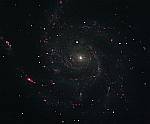
M101 galaxy
| Full record: 1935Description: M101 galaxy, the Pinwheel galaxy. M101 is one of the most prominent Grand Design spirals in the sky. While quite symmetric visually, it is of remarkable unsymmetry, its core being considerably displaced from the center of the disk. Halton Arp has included M101 as No. 26 in his Catalogue of Peculiar Galaxies as a Spiral with One Heavy Arm. The image was done with H-alpha, B, R, V filters. Exposure times 50 seconds in each broad band, and around 4 minutes in H-alpha. H-alpha and R are given red, B blue and V green. Telescope: INT Instrument: WFC Credit: James Furness (ING). Date: 1 January 2005 |
|
| #74 | 
M74 Galaxy or NGC 628
| Full record: 1912Description: This conspicuous spiral is a prototype of a grand-design Sc galaxy. Its distance may be about 30 to 40 million light years as it recedes with 793 km/sec. Then its spiral arms are about 1000 light years broad. They are traced with clusters of blue young stars and pinkish colored diffuse gaseous nebulae (H II regions), and reach out to cover a region of more than 10 minutes of arc in diameter, corresponding to roughly 95,000 light years, or about the same size as our Milky Way galaxy. 2 x 100s exposures in B, 2 x 80s exposures in V and 2 x 60s exposures in R. This image was created with the help of the ESA/ESO/NASA Photoshop FITS Liberator. PDF version: https://www.ing.iac.es/PR/dissemination/M74.pdf Telescope: INT Instrument: WFC Credit: Simon Dye (Cardiff University). Date: 1 August 2004 |
|
| #75 | 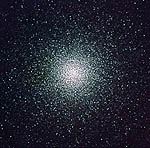
M3
| Full record: 1870Description: M3 Globular Cluster (NGC 5272). 90s in B and Sloan r, 60s in V. Telescope: INT Instrument: WFC Credit: Maureen Van den Berg (Leiden Univ.), Nik Szymanek (Univ. of Hertfordshire). Date: 16 January 2004 |
|
| #76 | 
NGC7635
| Full record: 1841Description: The Crescent Nebula (NGC 6888), which surrounds the Wolf-Rayet star PPM 84423 or HD192163, seen in Hydrogen-α emission. This was observed as part of the Isaac Newton Telescope/Wide Field Camera Photometric Hydrogen-α Survey (IPHAS) of the Galactic Plane. NGC 6888 is the illuminated ejecta of the star HD192163. This image combines data from all three IPHAS survey passbands (Hα Sloan r and i) in a false colour composite. Emission in the Hα narrow band is in red. The orientation is with N to the left and E down, and the image scale is about 20 x 18 square arcminutes. Telescope: INT Instrument: WFC Credit: Image based on data obtained as part of the INT Photometric Hα Survey of the Northern Galactic Plane: prepared by Jonathan Irwin (Institute of Astronomy, Cambridge). Date: 1 January 2004 |
|
| #77 | 
Supernova remnant S147
| Full record: 1881Description: A 5x3.5 arcmin mosaic of the supernova remnant S147 in Hα. North is to the top and East to the left. This is a continuum subtracted Hα image of the supernova remnant S147, located on the sky toward the anti-galactic centre. A strength of IPHAS is that it offers the chance to construct images of parts of the Galactic Plane on any scale from arcseconds up to degrees. This is a very large-scale image, built up by mosaicking a large number of overlapping IPHAS fields together. The bright blob to the left of the picture is a more typically compact Galactic nebula. A continuum subtracted Hα image of the supernova remnant S147, observed as part of the INT Photometric Hα Survey of the Northern Galactic Plane. PDF version: http://www.ing.iac.es/PR/dissemination/s147.pdf Telescope: INT Instrument: WFC Credit: Image based on data obtained as part of the INT Photometric Hα Survey of the Northern Galactic Plane: prepared by Albert Zijlstra, University of Manchester and Jonathan Irwin, IoA Cambridge. Date: 1 January 2004 |
|
| #78 | 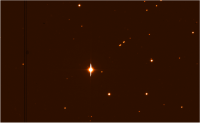
1997 AE12
| Full record: 2013Description: Observed for BBC Live Broadcast 23 Aug 22:00-23:30 UT. Sloan r, 2x30. |
|
| #79 | 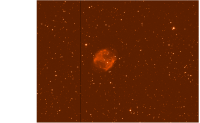
Planetary nebula Abell 82
| Full record: 2014Description: Observed for BBC Live Broadcast 23 Aug 22:00-23:30 UT. H-alpha 300s. |
|
| #80 | 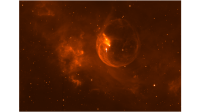
The Bubble Nebula (NGC 7635)
| Full record: 2015Description: Observed for BBC Live Broadcast 23 Aug 22:00-23:30 UT. H-alpha 180s. |
|
| #81 | 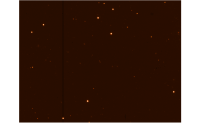
(3753) Cruithne asteroid
| Full record: 2016Description: Observed for BBC Live Broadcast 23 Aug 22:00-23:30 UT. Sloan r, 3x60s. |
|
| #82 | 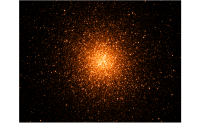
M13 globular cluster
| Full record: 2017Description: Observed for BBC Live Broadcast 23 Aug 22:00-23:30 UT. Filter V, 30s. |
|
| #83 | 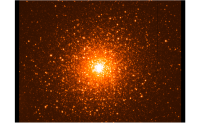
M15 globular cluster
| Full record: 2018Description: Observed for BBC Live Broadcast 23 Aug 22:00-23:30 UT. Sloan r, 120s. |
|
| #84 | 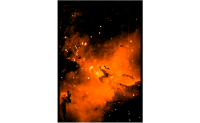
M16 Eagle Nebula and cluster
| Full record: 2019Description: Observed for BBC Live Broadcast 23 Aug 22:00-23:30 UT. H-alpha 120s. |
|
| #85 | 
M20 Triffid Nebula
| Full record: 2020Description: Observed for BBC Live Broadcast 23 Aug 22:00-23:30 UT. H-alpha 120s. |
|
| #86 | 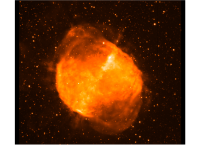
M27 Dumbell Nebula
| Full record: 2021Description: Observed for BBC Live Broadcast 23 Aug 22:00-23:30 UT. H-alpha 200s. |
|
| #87 | 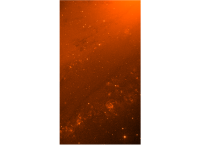
M31 Andromeda Galaxy (outer disk)
| Full record: 2022Description: Observed for BBC Live Broadcast 23 Aug 22:00-23:30 UT. H-alpha 180s. |
|
| #88 | 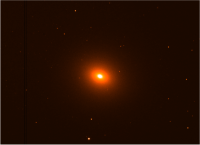
M32
| Full record: 2023Description: Observed for BBC Live Broadcast 23 Aug 22:00-23:30 UT. Sloan r, 10s. |
|
| #89 | 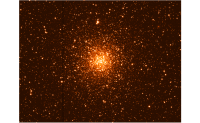
M56
| Full record: 2024Description: Observed for BBC Live Broadcast 23 Aug 22:00-23:30 UT. Sloan r, 10s. |
|
| #90 | 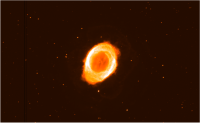
M57 Ring Nebula
| Full record: 2025Description: Observed for BBC Live Broadcast 23 Aug 22:00-23:30 UT. H-alpha 120s. |
|
| #91 | 
Helix Planetary Nebula (NGC 7293)
| Full record: 2027Description: Observed for BBC Live Broadcast 23 Aug 22:00-23:30 UT. |
|
| #92 | 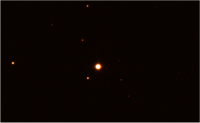
Neptune
| Full record: 2028Description: Observed for BBC Live Broadcast 23 Aug 22:00-23:30 UT. H-alpha 10s. |
|
| #93 | 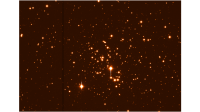
NGC869 Open Cluster
| Full record: 2029Description: Observed for BBC Live Broadcast 23 Aug 22:00-23:30 UT. Sloan r, 5s. |
|
| #94 | 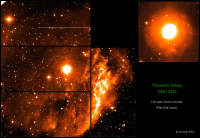
Planetary Nebula NGC 3242
| Full record: 2030Description: Observed for BBC Live Broadcast 23 Aug 22:00-23:30 UT. |
|
| #95 | 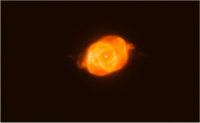
Planetary Nebula NGC 6543 (Cat's Eye Nebula)
| Full record: 2031Description: Observed for BBC Live Broadcast 23 Aug 22:00-23:30 UT. H-alpha 10s, 180s. |
|
| #96 | 
NGC6822
| Full record: 2032Description: Observed for BBC Live Broadcast 23 Aug 22:00-23:30 UT. Sloan r, 300s. |
|
| #97 | 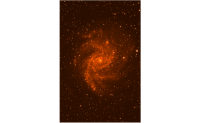
NGC6946
| Full record: 2033Description: Observed for BBC Live Broadcast 23 Aug 22:00-23:30 UT. Sloan g, 150s. |
|
| #98 | 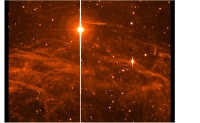
NGC6960 (Veil Nebula)
| Full record: 2034Description: Observed for BBC Live Broadcast 23 Aug 22:00-23:30 UT. H-alpha, 300s. |
|
| #99 | 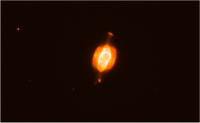
NGC7009 (Saturn Nebula)
| Full record: 2035Description: Observed for BBC Live Broadcast 23 Aug 22:00-23:30 UT. H-alpha, 30s. |
|
| #100 | 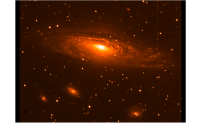
NGC7331
| Full record: 2036Description: Observed for BBC Live Broadcast 23 Aug 22:00-23:30 UT. Sloan g, 300s. |
|
| #101 | 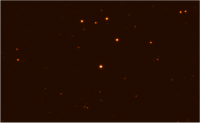
Pluto
| Full record: 2037Description: Observed for BBC Live Broadcast 23 Aug 22:00-23:30 UT. Sloan r, 10s. |
|
| #102 | 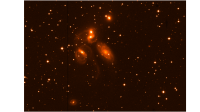
Stephans Quintet (NGC 7320)
| Full record: 2038Description: Observed for BBC Live Broadcast 23 Aug 22:00-23:30 UT. Sloan r, 180s. |
|
| #103 | 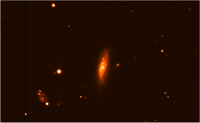
Supernova SN2003hm
| Full record: 2039Description: Observed for BBC Live Broadcast 23 Aug 22:00-23:30 UT. Sloan r, 180s. |
|
| #104 | 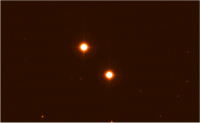
16Cygnus B double star
| Full record: 2041Description: Observed for BBC Live Broadcast 23 Aug 22:00-23:30 UT. [OIII]5007, 2.0s. |
|
| #105 | 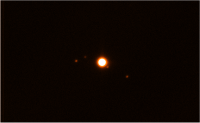
Uranus
| Full record: 2042Description: Observed for BBC Live Broadcast 23 Aug 22:00-23:30 UT. H-alpha, 2s. |
|
| #106 | 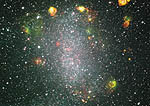
NGC 6822 or Barnards galaxy
| Full record: 1932Description: NGC 6822 is one of the nearest galaxies and is thus a member of the Local Group. The galaxy seems to be without symmetry and is classified as an irregular. At one end of a prominent bar a few clouds of glowing gas can be seen; at the other, bright bluish stars are scattered out into what appears to be the first signs of a straggling spiral arm. Three-colour image of NGC6822. In each image, green is the [OIII] emission, red the Hα one, while blue corresponds to the broad band Sloan-g images, mainly dominated by continuum stellar emission. In these images, planetary nebulae stand out as green or yellow dots. Telescope: INT Instrument: WFC Credit: Romano Corradi (ING), Laura Magrini (University of Firenze, Italy) Date: 1 January 2003 |
|
| #107 | 
IC 10
| Full record: 1937Description: IC 10. Three-colour image of IC10. In each image, green is the [OIII] emission, red the H-alpha one, while blue corresponds to the broad band Sloan-g images, mainly dominated by continuum stellar emission. In this image, planetary nebulae stand out as green or yellow dots. Photographic 3-colour composition from the Isaac Newton Telescope. Telescope: INT Instrument: WFC Credit: Romano Corradi (ING) and Laura Magrini (University of Firenze, Italy). Date: 1 January 2003 |
|
| #108 | 
M81 Galaxy.
| Full record: 1952Description: This ground-based image shows the spiral galaxy Messier 81 in its entirety. The image is a combination of exposures from the Isaac Newton Telescope on La Palma (courtesy of Jonathan Irwin) and Digitized Sky Survey 2 images. PDF version: https://www.ing.iac.es/PR/dissemination/M81.pdf Telescope: INT Instrument: WFC Credit: ESA/INT/DSS2. Date: 1 January 2003 |
|
| #109 | 
NGC 7331 Galaxy
| Full record: 1914Description: Detector: EEV. Filters and exposure times: RGO U (420s), Sloan g (120s), Sloan r (120s). Telescope: INT Instrument: WFC Credit: Edward Conway, Nathan Horleston and Steve Maddox (University of Nottingham) and Nik Szymanek (University of Hertfordshire). Date: 6 August 2002 |
|
| #110 | 
M43
| Full record: 1838Description: M43 is actually a part of the Great Orion Nebula, M42, which is separated from the main nebula by an impressive, turbulent dark lane. Wide-Field Camera on Isaac Newton Telescope. This is a 300 second exposure in H-alpha combined with colour information from an amateur CCD image. PDF version: https://www.ing.iac.es/PR/dissemination/M43.pdf Telescope: INT Instrument: WFC Credit: Nik Szymanek (University of Hertfordshire) and Simon Tulloch (ING). Date: 1 January 2002 |
|
| #111 | 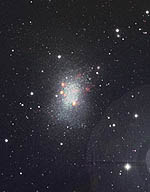
Sextans B Irregular Galaxy
| Full record: 1893Description: This image comes from the Local Group Census Wide Field programme on the INT. Detector: EEV 4280. Filters and exposure times: H-alpha, [OIII] and Stromgren Y. Telescope: INT Instrument: WFC Credit: Romano Corradi (ING). Date: 1 January 2002 |
|
| #112 | 
M1, the Crab Nebula.
| Full record: 1884Description: H-alpha, OIII and HeII images taken using the Wide Field Camera on the Isaac Newton Telescope. 1200s per filter. Telescope: INT Instrument: WFC Credit: Peter Sorensen (ING) and Nik Szymanek. Date: 2 January 2001 |
|
| #113 | 
NGC 7293
| Full record: 1849Description: Image of the planetary nebula NGC 7293. It was obtained with the Wide Field Camera at the 2.5m INT telescope. A narrow filter has been used to isolate the emission from the nebular gas in the hydrogen Halpha line (at wavelength 656 nm) and in the nitrogen doublet [NII] at lambda 655 and 658 nm. Telescope: INT Instrument: WFC Credit: Romano Corradi (ING). Date: 1 January 2001 |
|
| #114 | 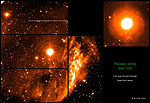
NGC 3242
| Full record: 1851Description: Image of the planetary nebula NGC 3242. Image obtained with the Wide Field Camera at the 2.5m INT telescope. A narrow filter has been used to isolate the emission from the nebular gas in the hydrogen Halpha line (at wavelength 656 nm) and in the nitrogen doublet [NII] at lambda 655 and 658 nm. Telescope: INT Instrument: WFC Credit: Romano Corradi (ING). Date: 1 January 2001 |
|
| #115 | 
Sh2-200
| Full record: 1852Description: Image of the planetary nebula Sharpless 2-200. This is a very evolved planetary nebula, whose central star has already faded to a low luminosity after exhausting all circumnuclear fuel. Around the filamentary inner nebula, a large faint halo is observed. This halo might be interstellar gas ionized by the central star of the planetary nebula, or alternatively ancient material ejected by the star itself when it was a red giant some 50 to 100 thousand years ago. These haloes provide very precious information about the various events of strong mass loss at the end of life of solar type stars. These mass loss events are the ultimate cause leading to the death of these stars. Image obtained using the Wide Field Camera at the 2.5m INT telescope. A narrow filter has been used to isolate the emission from the nebular gas in the hydrogen Halpha line (at wavelength 656 nm) and in the nitrogen doublet [NII] at lambda 655 and 658 nm. Telescope: INT Instrument: WFC Credit: Romano Corradi (ING) and Nik Szymanek. Date: 1 January 2001 |
|
| #116 | 
Sh2-200
| Full record: 1853Description: Image of the planetary nebula Sharpless 2-200. This is a very evolved planetary nebula, whose central star has already faded to a low luminosity after exhausting all circumnuclear fuel. Around the filamentary inner nebula, a large faint halo is observed. This halo might be interstellar gas ionized by the central star of the planetary nebula, or alternatively ancient material ejected by the star itself when it was a red giant some 50 to 100 thousand years ago. These haloes provide very precious information about the various events of strong mass loss at the end of life of solar type stars. These mass loss events are the ultimate cause leading to the death of these stars. Image obtained using the Wide Field Camera at the 2.5m INT telescope. A narrow filter has been used to isolate the emission from the nebular gas in the hydrogen Halpha line (at wavelength 656 nm) and in the nitrogen doublet [NII] at lambda 655 and 658 nm. Telescope: INT Instrument: WFC Credit: Romano Corradi (ING). Date: 1 January 2001 |
|
| #117 | 
Sh2-200
| Full record: 1854Description: Image of the planetary nebula Sharpless 2-200. This is a very evolved planetary nebula, whose central star has already faded to a low luminosity after exhausting all circumnuclear fuel. Around the filamentary inner nebula, a large faint halo is observed. This halo might be interstellar gas ionized by the central star of the planetary nebula, or alternatively ancient material ejected by the star itself when it was a red giant some 50 to 100 thousand years ago. These haloes provide very precious information about the various events of strong mass loss at the end of life of solar type stars. These mass loss events are the ultimate cause leading to the death of these stars. Image obtained using the Wide Field Camera at the 2.5m INT telescope. A narrow filter has been used to isolate the emission from the nebular gas in the hydrogen Halpha line (at wavelength 656 nm) and in the nitrogen doublet [NII] at lambda 655 and 658 nm. Telescope: INT Instrument: WFC Credit: Romano Corradi (ING) and Nik Szymanek. Date: 1 January 2001 |
|
| #118 | 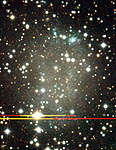
The Cepheus Galaxy
| Full record: 1892Description: Dwarf Galaxy of the Local Group. Detector: EEV 4280. Filters and exposure times: 1200 second exposures in Sloan Gunn g, r and i. Telescope: INT Instrument: WFC Credit: Mike Irwin (IoA). Date: 1 January 2001 |
|
| #119 | 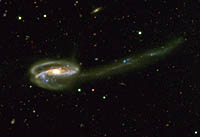
Tadpole Galaxy
| Full record: 1894Description: Tadpole Galaxy (ARP 188 or UGC 10214). This galaxy has a stream of material flowing out of it, as it is interacting with another galaxy. In this case, the stream of material is apparently flowing towards nothing. Detector: EEV 4280. Filters and exposure times: Filters Sloan Gunn u, g and i. Telescope: INT Instrument: WFC Credit: Neil Trentham and Simon Hodgkin (IoA). Date: 1 January 2001 |
|
| #120 | 
M74 Galaxy or NGC 628
| Full record: 1910Description: This conspicuous spiral is a prototype of a grand-design Sc galaxy. Its distance may be about 30 to 40 million light years as it recedes with 793 km/sec. Then its spiral arms are about 1000 light years broad. They are traced with clusters of blue young stars and pinkish colored diffuse gaseous nebulae (H II regions), and reach out to cover a region of more than 10 minutes of arc in diameter, corresponding to roughly 95,000 light years, or about the same size as our Milky Way galaxy. Isaac Newton Telescope+Wide Field Camera+EEV CCD. Filters V, R and I. Telescope: INT Instrument: WFC Credit: Paul Vreeswijk and Nik Szymanek. Date: 1 January 2001 |
|
| #121 | 
NGC 253 Galaxy
| Full record: 1917Description: Image taken using the Wide Field Camera on the Isaac Newton Telescope. Shown here is the whole mosaic of CCDs. In order to get a true-colour impression, 3 images were obtained and combined using filters Kitt Peak B, Harris V and Sloan-Gunn r. Images were reduced using the new ING pipeline reduction system Gigawulf. Telescope: INT Instrument: WFC Credit: Peter Sorensen, Robert Greimel, Nik Szymanek. Date: 3 November 2000 |
|
| #122 | 
NGC 253 Galaxy
| Full record: 1918Description: Image taken using the Wide Field Camera on the Isaac Newton Telescope. Shown here is the whole mosaic of CCDs. In order to get a true-colour impression, 3 images were obtained and combined using filters Kitt Peak B, Harris V and Sloan-Gunn r. Images were reduced using the new ING pipeline reduction system Gigawulf. Telescope: INT Instrument: WFC Credit: Peter Sorensen, Robert Greimel, Nik Szymanek. Date: 3 November 2000 |
|
| #123 | 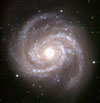
M100 (NGC 4321)
| Full record: 1928Description: M100 (NGC 4321). This is a barred galaxy in the Virgo cluster. New infrared and optical images taken with the WHT suggest that this
ormal spiral galaxy hides a barlike structure in its heart. True colour image obtained using BVI CCD imaging on the INT. Telescope: INT Instrument: WFC Credit: J. E. Beckman, R. F. Peletier, J. H. Knapen, R. L. M. Corradi, L. J. Gentet. Date: 1 January 2000 |
|
| #124 | 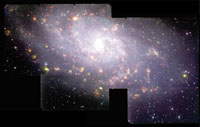
M33 Galaxy
| Full record: 1919Description: This galaxy is one of the finest examples of a spiral galaxy in the sky and is about one degree across. The galaxy is a member of the 30 or so galaxies of the Local Group and is close enough - about 2.5 million light years - for us to study the anatomy of a galaxy in great detail. Many individual bright stars pepper the delicate spiral arms which are in turn sprinkled with pink star-forming regions. Several of the clumps of bright stars and their associated nebulae are bright enough to have been catalogued as separate objects. This image was obtained with the mosaic CCDs of the Wide Field Camera at the INT. The image is a composition of frames taken in three narrow bands: the green colour represents the galaxian emission in [OIII] nebular line, red is the H-alpha hydrogen emission and blue is mainly stellar light taken through a continuum filter centred at 555.0 nm (Stromgren Y). In only one observing night, and with two positionings of the telescope, it was possible to cover the whole galaxy which has a size of approximately one degree in the sky. PDF version: https://www.ing.iac.es/PR/dissemination/triangulum.pdf |
|
| #125 | 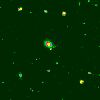
A high-redshift supernova
| Full record: 1820Description: Studies based on observations of supernovae in the farthest reaches of deep space indicate that the universe will expand forever because there isn enough mass in the universe for its gravity to slow the expansion, which started with the Big Bang. Image 1 was taken using the INT and it corresponds to a high-redshift type Ia supernova thousands of millions of light years away. When a star explodes as a type Ia supernova its brightness is similar to the host galaxy. This latter feature along with the possibility of calibrating their maximum brightness, make type Ia supernovae the best known standard candles to investigate the geometry and the dynamics of our universe. This is a CCD image obtained with the Wide Field Camera on the Isaac Newton Telescope. PDF version: https://www.ing.iac.es/PR/dissemination/highz.pdf Telescope: INT Instrument: WFC Credit: Javier Mendez (ING), Pilar Ruiz-Lapuente (University of Barcelona) and Nic Walton (ING) Date: 1 July 1998 |
|
| #126 | 
M101 galaxy
| Full record: 1933Description: M101 galaxy, the Pinwheel galaxy. M101 is one of the most prominent Grand Design spirals in the sky. While quite symmetric visually, it is of remarkable unsymmetry, its core being considerably displaced from the center of the disk. Halton Arp has included M101 as No. 26 in his Catalogue of Peculiar Galaxies as a Spiral with One Heavy Arm. The picture was produced by composing three, two-minute, exposures taken through R, V and B Harris photometric filters, approximating the normal red, green and blue passbands. The area shown is approximately 30x30 arc minutes, i.e. the full field of the Wide-Field Camera CCD mosaic at the prime-focus of the Isaac Newton Telescope. Telescope: INT Instrument: WFC Credit: Peter Bunclark (IoA). Date: 1 January 1998 |
|
| #127 | 
M101 galaxy
| Full record: 1934Description: M101 galaxy, the Pinwheel galaxy. M101 is one of the most prominent Grand Design spirals in the sky. While quite symmetric visually, it is of remarkable unsymmetry, its core being considerably displaced from the center of the disk. Halton Arp has included M101 as No. 26 in his Catalogue of Peculiar Galaxies as a Spiral with One Heavy Arm. The picture was produced by composing three, two-minute, exposures taken through R, V and B Harris photometric filters, approximating the normal red, green and blue passbands. The area shown is approximately 30x30 arc minutes, i.e. the full field of the Wide-Field Camera CCD mosaic at the prime-focus of the Isaac Newton Telescope. PDF version: https://www.ing.iac.es/PR/dissemination/M101.pdf Telescope: INT Instrument: WFC Credit: Peter Bunclark (IoA) and Nik Szymanek. Date: 1 January 1998 |
|
| #128 | 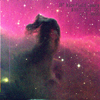
Horse Head Nebula
| Full record: 1845Description: The Horse Head Nebula. This dark dust nebula, in the shape of a horses head, protrudes into a bright emission nebula, IC 434, in the constellation Orion. A nearby naked-eye star illuminates the surface of an otherwise invisible dusty cloud, exciting the distinctive red emission from hydrogen. From this dark cloud projects yet more dust, which has the shape of the head of a horse, seen in silhouette against the glowing background. |
|
| #129 | 
M51
| Full record: 1922Description: M51 galaxy, known as The Whirlpool Galaxy, is a bright spiral galaxy fairly close to us (7.5 Megaparsecs = 25 million light years). To the north of M51, at the bottom of the picture, is a companion galaxy which is being disrupted by the gravitational tidal forces of the main galaxy. Shown here is a true-colour picture using BVR imaging on the INT wide field camera. This picture was generated from three two-minute exposures. The field size of this single Loral CCD image is 12.6 arcminutes. Telescope: INT Instrument: WFC Credit: Peter Bunclark (IoA). Date: 1 January 1997 |
|
| #130 | 
NGC 6822 or Barnards galaxy
| Full record: 1931Description: NGC 6822 is one of the nearest galaxies and is thus a member of the Local Group. The galaxy seems to be without symmetry and is classified as an irregular. At one end of a prominent bar a few clouds of glowing gas can be seen; at the other, bright bluish stars are scattered out into what appears to be the first signs of a straggling spiral arm. The fact that this galaxy is near enough for us to be able to resolve a large number of its individual stars makes it possible to study the star formation history based on colour-magnitude diagrams. This image was obtained using CCD imaging on the Isaac Newton Telescope. Exposure times were 900s in I, 900s in R, 1000s in V and 1200s in B. PDF version: https://www.ing.iac.es/PR/dissemination/ngc6822.pdf Telescope: INT Instrument: WFC Credit: Carme Gallart (IAC) and Antonio Aparicio (IAC). Date: 1 January 1996 |
|
| #131 | 
NGC 1300 Galaxy.
| Full record: 1944Description: NGC 1300 is a classic barred spiral galaxy. It is 17 Mpc away and relatively face-on, with an inclination of about 35 degrees. Because of its size and inclination it is well-suited for a number of studies. True-colour CCD images from B, V and I imaging on the Isaac Newton Telescope. Telescope: INT Instrument: WFC Credit: J. A. Lopez Aguerri, M. Prieto, C. Munoz-Tunon, and A. M. Varela (IAC). Date: 1 January 1996 |
|
| #132 | 
M96 Galaxy.
| Full record: 1943Description: M 96 or NGC 3368 Galaxy. M96 is the brightest member of the Leo I group of galaxies, which is therefore also called the M96 group. Its distance was determined to be about 41 million light years (after corrections for the distance scale which are implied by the results of ESAs Hipparcos satellite) by Nial R. Tanvir with the Hubble Space Telescope by observing Cepheid variables. Interpolated with the HST result of 35.5 million light years for its neighbor M95, a value of 38 million light years can be adopted for the group. True-colour CCD image obtained with the Isaac Newton Telescope. Telescope: INT Instrument: WFC Credit: Nial Tanvir (IoA). Date: 1 January 1995 |
|
| #133 | 
he galaxy Dwingeloo 1
| Full record: 1927Description: The galaxy Dwingeloo 1. This is a barred spiral galaxy, probably one of the largest and nearest galaxies, but undiscovered until 1994. This is because it is hidden behind the disk of our own galaxy, the Milky Way - as a result more than 99% of its light is absorbed by dust in our galaxy before it reaches us. The galaxy was discovered using a combination of radio observations and INT CCD imaging. Shown here is a true colour picture using VRI CCD imaging on the INT. Telescope: INT Instrument: WFC Credit: G. S. Hughes, & S. Maddox (RGO). Date: 1 January 1994 |



